These resources provide detailed guidance for planning and executing a parish modification.
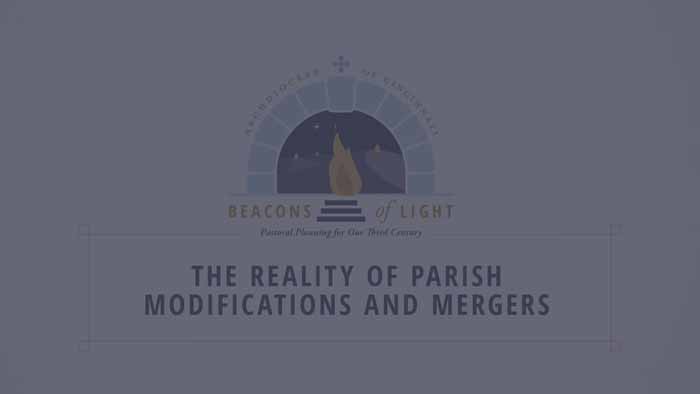
In 2013, the congregation for the clergy wrote a letter to all of the diocesan bishops, reflecting on the reality of parish modifications and mergers. In the letter they analyzed common pitfalls and gave updates on the jurisprudence from Rome as far as how to do this. In that letter…
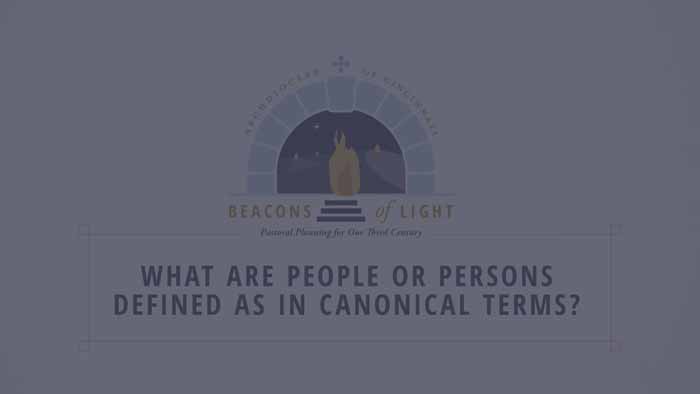
The Catholic Church distinguishes between physical persons and juridic persons. Each one of us is a physical person, obviously. A juridic person is a legal personage. In the civil world, for example, an incorporation would be similar to a juridic person in the Church. That juridic person is a subject…
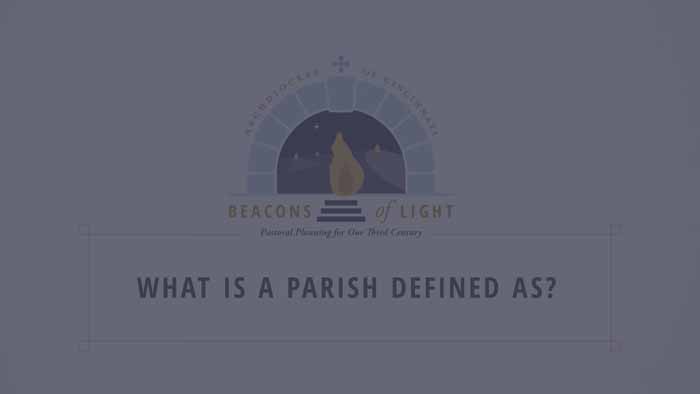
A parish is the community of the faithful. It’s the people themselves. It has nothing to do with property that they happen to own, or buildings that they own, or things that they do. Territorial vs. personal parishes. Territorial parishes are united by geography—people who live within that region…
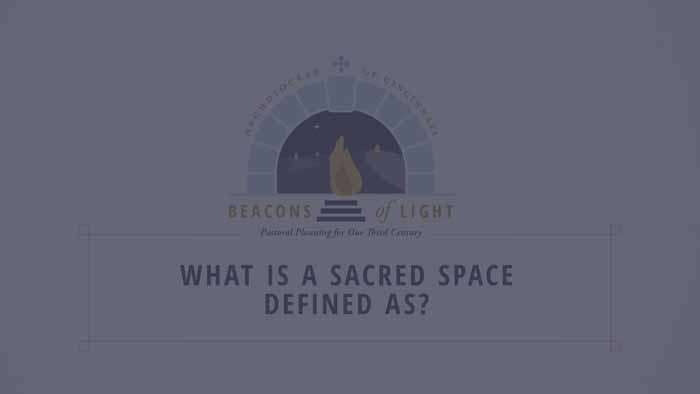
A sacred space is any space set aside by the proper authority for sacred use, primarily for the worship of God. There are three types of common sacred spaces: a church, an oratory, and a chapel. Church. The church is a sacred building, designed for divine worship, to which the…
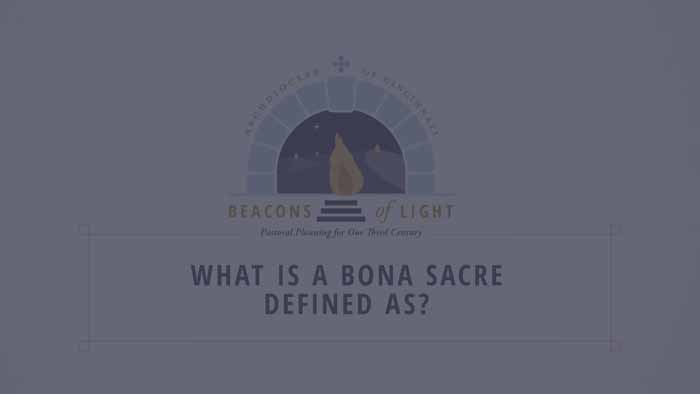
Bona Sacra refers to the sacred goods that belong to a juridic person. This includes substantial items that have been set aside for sacred use, such as Stations of the Cross, bells, stained glass windows, and sacred vessels—not smaller items such as old hymnals…
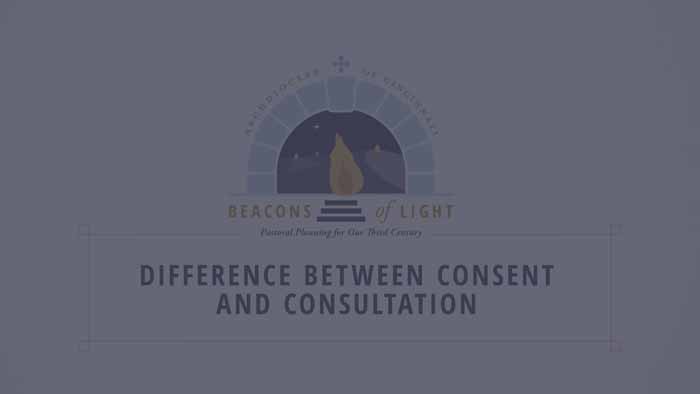
Some of these processes require consultation with a body. Others require the consent of that body. Consultation. This means that the body needs to be heard. The person making a decision needs to get the advice of that body before proceeding, but does not necessarily have to follow the advice…
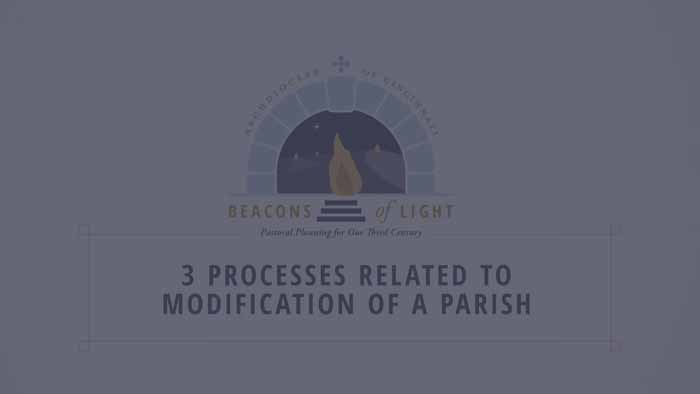
There are three canonical processes relating to the modification of a parish. These are: Modification, Relegation to profane use, Alienation of property. There are three types of modification: Suppression, Extinctive union, of which there are two varieties, Total division. Suppression. In a suppression, the parish completely ceases to exist because…
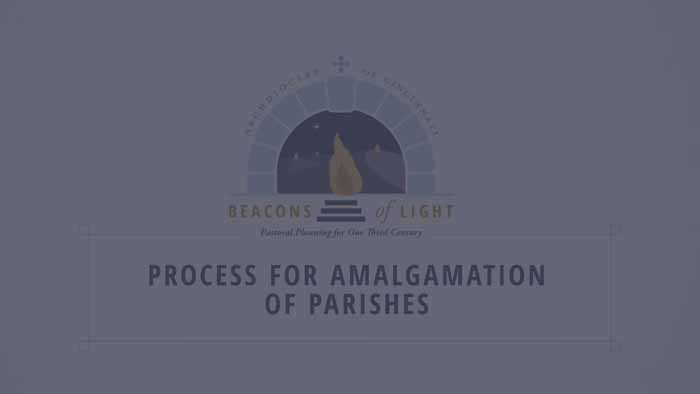
As previously noted, there is a distinction between an amalgamation and a merger. An amalgamation is where you have a situation of A plus B plus C equals a bigger version of one of those three, so a bigger version of an existing parish. An amalgamation requires:
Just cause, Convocation…
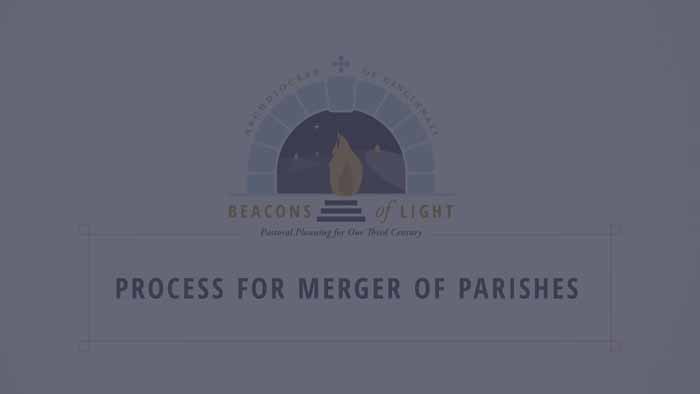
A merger differs from an amalgamation in that a brand new parish is created. In a merger, a brand new parish is created, so A plus B plus C equals brand new parish D. A merger has the same requirements as an amalgamation. It requires:
a just cause; convocation of…
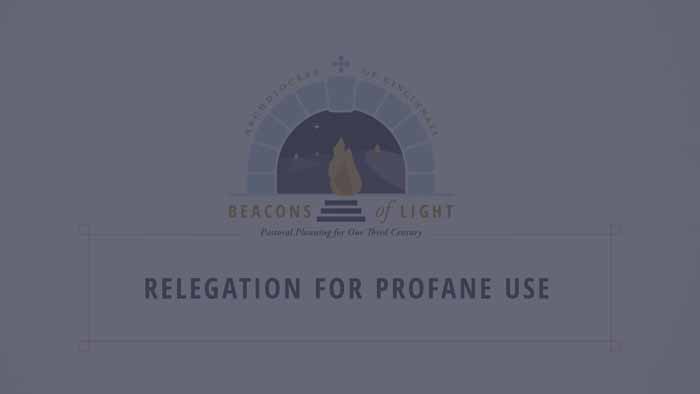
Relegation for profane use is the closing of a church, no longer using it as a sacred space. That process must be done prior to alienating the property. Something to keep in mind is that an altar can never be relegated to profane use. So altars would need to either…
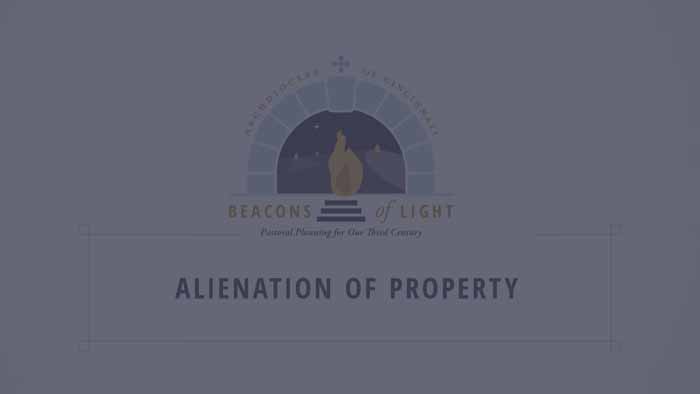
There are two situations in which alienation of property would require permission from the Holy See. These are: The value exceeds 3.5 million dollars or the item(s) or property are considered artistic or precious for historical reasons. There’s no jurisprudence on what “artistic or precious” means specifically, but generally speaking…
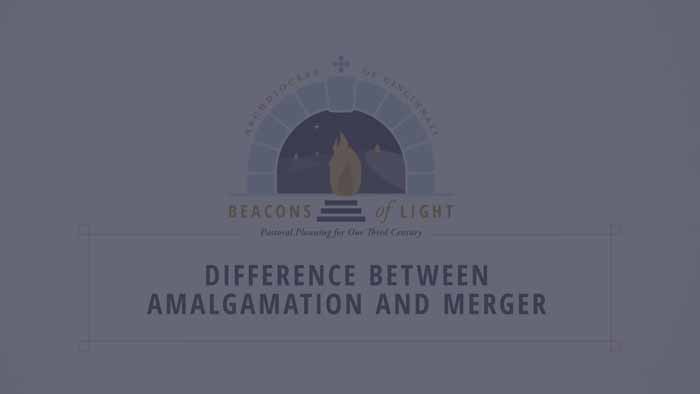
In an amalgamation, the sacramental registers are closed for all of the parishes that went extinct. The sacramental registers of whichever parish continues to exist are the only ones that are used. Because one of the parishes had already existed, there is no new civil entity created either, as in…

Deferred maintenance is a pressing concern. Across the Archdiocese, the cost is hundreds of millions of dollars, and this is going to be the determining factor in whether certain places stay open or not. So you need to get on top of that very quickly. Insurance claims. Deferred maintenance can…
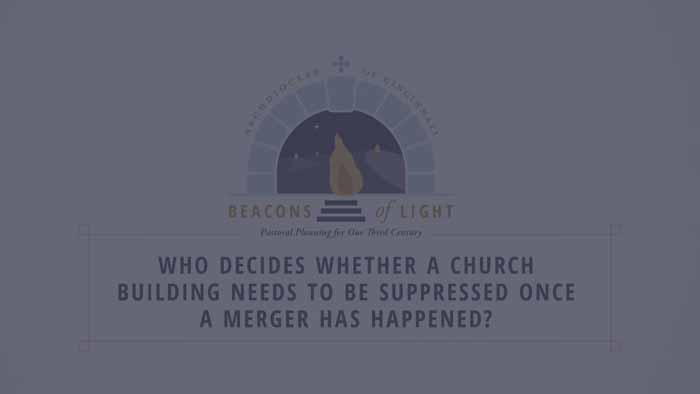
Once the merger happens, the new parish is responsible for the church and the current parish council would decide whether to start the process for relegation.
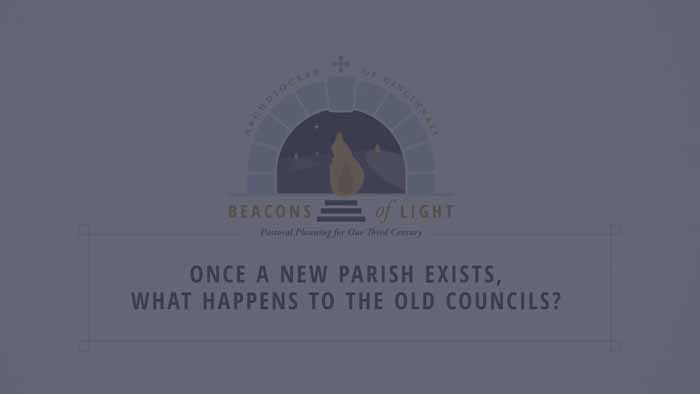
Once a new parish exists, that parish now has the parish and the finance councils, and the previous ones cease to exist. This is not always an easy situation to navigate, and that’s where openness, communication, and transparency is going to pay off.
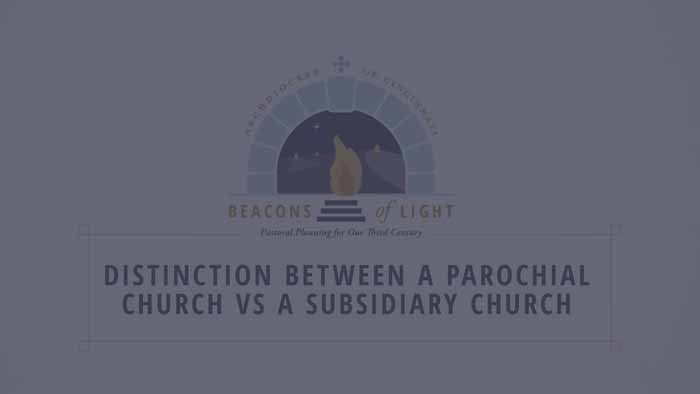
The decree effecting the merger or amalgamation defines which church becomes the parochial church. The other churches are then subsidiary churches. Parochial Church: A parochial church, like any church, must be open for public worship. In a church, the Blessed Sacrament must be reserved, and Mass is to be celebrated…
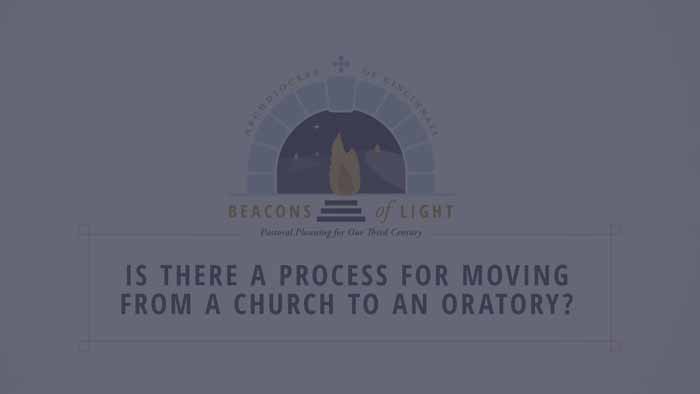
There is no set process to move a church to an oratory. If you were to do this, you would in theory have to relegate the church to profane use, but then reestablish it as an oratory. You would have to explain the grave cause to relegate the church, but…
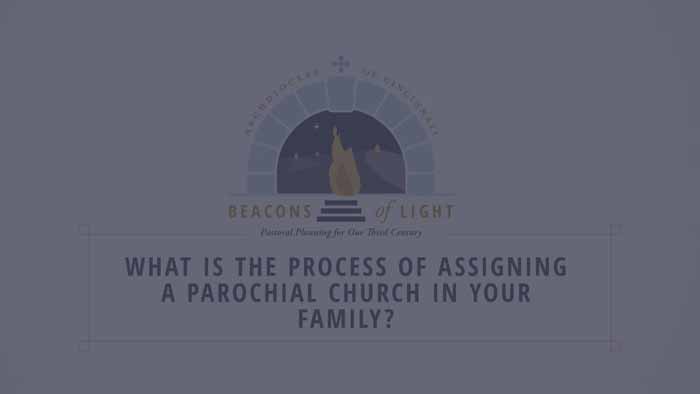
In his decree, the Archbishop would assign a parochial church in your family. However, the Archbishop would talk with the pastor and the people, taking into account what they believe is best. In the case of a merger, when there is a brand new entity, you can choose any of…
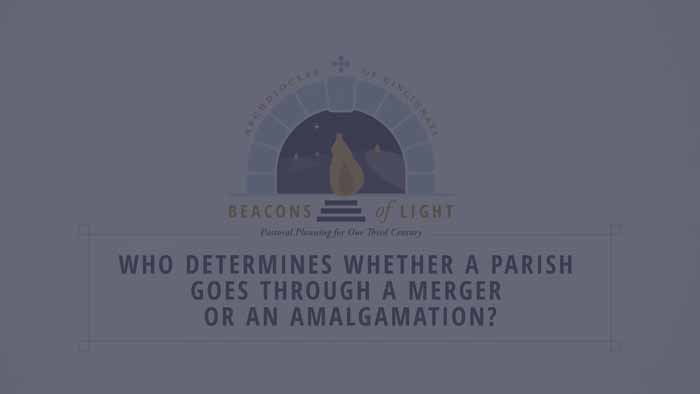
For various reasons, amalgamation is easier on the backend because you’re not creating a new entity. Pastorally, though, I think a lot of people are going to see it as the big fish swallowing the smaller fishes. You have to present both realities to your people so they understand the…
Learn more about how to prepare for and navigate the sale of church property from a financial and canonical perspective.

A business plan will allow you to: Understand your current reality. Some of you are brand new to your family of parishes. You cannot even begin to plan unless you realize the current reality of each of your parishes. It’s absolutely critical. Determine how to best move forward. Based on…
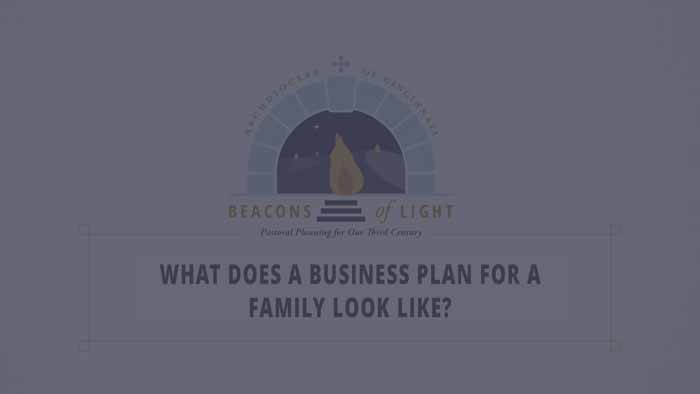
Your business plan should have four key elements: Plan, Execute, Evaluate, and Adjust. Plan. This includes understanding the current reality and determining critical success factors. Execute. This includes getting outside help. This project is way too big for you to try to do it yourself. You have to rely on…

Identify critical success factors. As you’re putting this plan together, part of what you’re doing is asking the tough questions and determining critical success factors. For example, what do staffing levels look like, whether you have an individual parish or if you were to combine parishes? Recruit lots of help…

We can provide you with real world tools that you can use to gauge the current reality at your parish and create your business plan. As you go through the resources, here are key points to keep in mind. A staffing plan is included in the resources, which we discuss…

You need a complete inventory of what you have and the state that it’s in, and what you can expect future costs to be. What’s the average maintenance cost for running your church? Are there any current projects underway for that building? Are there deferred maintenance issues? Include the following…

Contracts represent potential surprises for you as you move forward. It’s important to know what they are to avoid problems down the road. For every contract you have, you’ll want to know: Who is the contract with? When did you sign it? What does it cost annually? How long is…
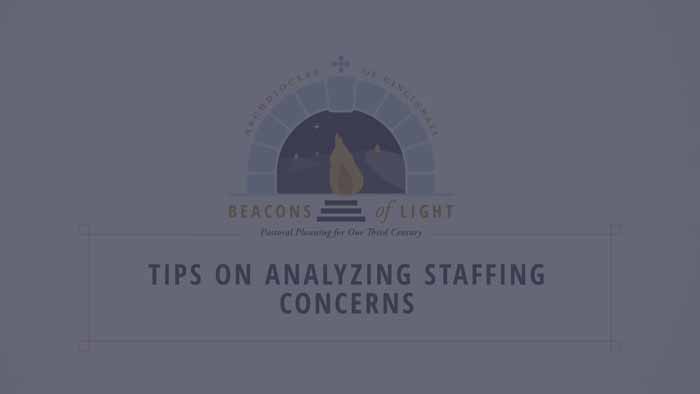
This is a difficult topic but it can’t be ignored. A staffing analysis means taking an inventory of your people by role. You need to assess what they do and what they cost each year in benefits and salary. You can get the payroll information from your business manager. Inevitably…
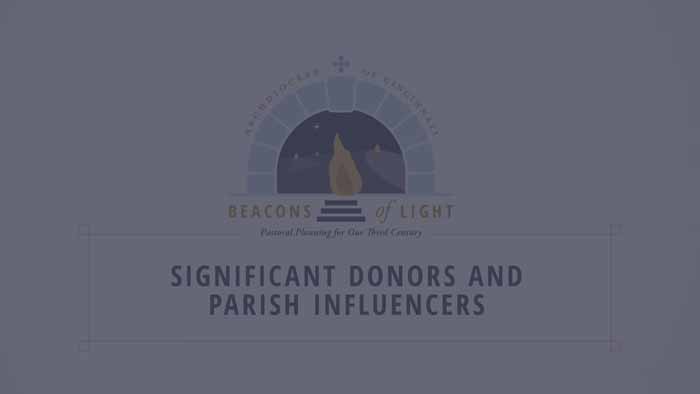
Donors are those who give money to support the parish. Influencers, on the other hand, may not give a lot of money, but can mobilize volunteers and get things done. Whether you’re new to the parish or not, it’s important to be aware of your significant donors and influencers. This…
I am convinced that Beacons of Light, born of great hope, will enable us to form stronger parishes, centered on the Eucharist, that radiate the love of Christ and joy of the Gospel… God has abundantly blessed our first two centuries and will certainly bless the next.
— ARCHBISHOP DENNIS M. SCHNURR
In 2013, the congregation for the clergy wrote a letter to all of the diocesan bishops, reflecting on the reality of parish modifications and mergers. In the letter they analyzed common pitfalls and gave updates on the jurisprudence from Rome as far as how to do this.
In that letter, the Prefect outlines three things that are important to keep in mind about all of this.
The Catholic Church distinguishes between physical persons and juridic persons. Each one of us is a physical person, obviously. A juridic person is a legal personage. In the civil world, for example, an incorporation would be similar to a juridic person in the Church. That juridic person is a subject of the law and therefore has obligations and rights.
The reason a lot of these procedures exist, and need to be followed, is to protect the rights of the people involved, whether they’re the physical persons who make up a community, or the juridic person of the parish itself. So you can’t just, with the stroke of a pen, basically “euthanize” a juridic person. There are rules and processes that must be followed.
Parish as a juridic person. Probably the most common juridic person that we would all be familiar with is a parish, which would be a grouping of physical persons.
Parish vs. church. It’s important to note that there is a difference between a parish and a church. The church is—very specifically—the building of the church.
A parish is the community of the faithful. It’s the people themselves. It has nothing to do with property that they happen to own, or buildings that they own, or things that they do.
Territorial vs. personal parishes. Territorial parishes are united by geography—people who live within that region are therefore members of the parish. A personal parish is united by some other reason. Traditionally it’s been ethnic reasons. So you’d have the German parish or the Irish parish, for example. In the case of Saint Louis, it was based on employment. Parishioners were printers who needed a particular community in order to be able to worship with their schedule.
Only a personal parish can actually be suppressed, but a territorial parish has a different process that goes with it.
A sacred space is any space set aside by the proper authority for sacred use, primarily for the worship of God.
There are three types of common sacred spaces: a church, an oratory, and a chapel.
Church. The church is a sacred building, designed for divine worship, to which the faithful have a right of entry. This means there must be some openness of a church, by law, in order for it to function as a church.
Oratory. A church and an oratory both have public access, but are differentiated in that the oratory is for a particular group of people, but anyone can publicly access it. An oratory at a seminary, for example, is built primarily for the use of the community at the Seminary, and yet it can still open publicly for Mass, Vespers, etc.
Chapel. A chapel is for private use. So if you happen to have a chapel in your rectory, that would canonically be a chapel because it is built for those who live there and it is not open to the public.
Bona Sacra refers to the sacred goods that belong to a juridic person. This includes substantial items that have been set aside for sacred use, such as Stations of the Cross, bells, stained glass windows, and sacred vessels—not smaller items such as old hymnals.
Some of these processes require consultation with a body. Others require the consent of that body.
Consultation. This means that the body needs to be heard. The person making a decision needs to get the advice of that body before proceeding, but does not necessarily have to follow the advice. But they have to solicit that advice.
Consent. This means you can’t take an action without that body agreeing to it. So that comes into play primarily with alienation of property. The Archbishop can’t grant the permission for that alienation without having received the consent of both the College of Consultors and the Archdiocesan Finance Council.
There are three canonical processes relating to the modification of a parish. These are:
There are three types of modification:
Suppression. In a suppression, the parish completely ceases to exist because the community of the people of which it was formed no longer exists. This is why only a personal parish can be suppressed, because it has to do with those physical persons who make it up. If they are no longer there, then the parish can be suppressed.
In a territorial parish, you’re always going to have people there. Territorial parishes can’t be suppressed. But what they do undergo is an extinctive union.
Extinctive union. This is a canonical process by which two or more parishes are united in one of two ways: either an amalgamation or a merger.
The word “merger” is often used instead of amalgamation, but the two are distinct.
Total division. When one parish is thriving and has grown to the point that it can’t be managed, it can be divided into two to create another parish. This is not what we’re dealing with today.
Difference between suppression and extinctive union. In a suppression, the physical persons are gone, therefore the parish no longer exists. In the extinctive union, you’re dealing with the extinction of the juridic person. The legal personage ceases to exist, but the physical persons remain there. So a union needs to occur to deal with those physical persons moving forward.
Relegation to profane use. This is a process by which the competent authority decrees that a former sacred space no longer be set aside as such.
Alienation. This is the loss of real goods of a juridic person, either by sale or some other means. So it’s not simply selling property. It’s anything that either constitutes a real loss of property to the parish or could adversely affect the property of the parish.
For example, if you are going to enter a risky lease, the rules of alienation may apply here; so you will need the consent of the College of Consultors and the Archdiocesan Finance Council before you can enter into that lease.
As previously noted, there is a distinction between an amalgamation and a merger. An amalgamation is where you have a situation of A plus B plus C equals a bigger version of one of those three, so a bigger version of an existing parish.
An amalgamation requires:
The amalgamation officially goes into effect after the period for raising recourse has passed—approximately 60 days after the decree is issued. Keep in mind that 60 days is the minimum. It can take some time to figure out what this new entity looks like, and how it will function.
In an amalgamation the period of recourse begins once the people are notified of the decision—so however long it takes to get the decree from being signed to promulgated.
A merger differs from an amalgamation in that a brand new parish is created. In a merger, a brand new parish is created, so A plus B plus C equals brand new parish D.
A merger has the same requirements as an amalgamation. It requires:
and then it takes effect after a period of recourse has passed.
Relegation for profane use is the closing of a church, no longer using it as a sacred space. That process must be done prior to alienating the property.
Something to keep in mind is that an altar can never be relegated to profane use. So altars would need to either be removed and used elsewhere, or destroyed.
Relegation requires:
And it goes into effect after a period for recourse.
There are two situations in which alienation of property would require permission from the Holy See. These are:
There’s no jurisprudence on what “artistic or precious” means specifically, but generally speaking it extends beyond whether an item is on a historical register. The Holy See would be looking at whether the item has significant ecclesial history.
In an amalgamation, the sacramental registers are closed for all of the parishes that went extinct. The sacramental registers of whichever parish continues to exist are the only ones that are used.
Because one of the parishes had already existed, there is no new civil entity created either, as in a merger. The tax ID number and similar information from the existing parish will continue to exist, but will now be applied to the employees from all the different campuses.
Additionally, the parish name remains that of the absorbing parish.
Church buildings. The modification does not affect the church buildings in any way. Something that Rome has clarified in the jurisprudence is that churches will continue to be churches, even in the event of an amalgamation.
So say you have five parishes and bring them into one. Now you have one parish with five churches. They do not become a lesser type of sacred space just because the parish is now one. Rome has said that you can colloquially and devotionally call those buildings whatever you want, but they maintain their canonical status as a church.
Deferred maintenance is a pressing concern. Across the Archdiocese, the cost is hundreds of millions of dollars, and this is going to be the determining factor in whether certain places stay open or not. So you need to get on top of that very quickly.
Insurance claims. Deferred maintenance can cause problems in the event you need to file an insurance claim. If an insurance company determines that maintenance has been neglected, the claim may not cover the extent of the damage.
How to identify deferred maintenance. You could hire experts to come in and walk your building and grounds, but that can be expensive. Alternatively you can find the people within the parish who are engineers and architects, who own big plumbing contracting companies, etc. They’re usually more than happy to form a committee, walk the grounds, and put the reports together for you. That never costs anything, and it can make things a little easier for you.
Once the merger happens, the new parish is responsible for the church and the current parish council would decide whether to start the process for relegation.
Once a new parish exists, that parish now has the parish and the finance councils, and the previous ones cease to exist. This is not always an easy situation to navigate, and that’s where openness, communication, and transparency is going to pay off.
The decree effecting the merger or amalgamation defines which church becomes the parochial church. The other churches are then subsidiary churches.
Parochial Church
A parochial church, like any church, must be open for public worship. In a church, the Blessed Sacrament must be reserved, and Mass is to be celebrated as far as possible at least twice a month. It doesn’t need to be a public Mass.
The parochial church must have a baptismal font, and the parochial church has a right of precedence for the celebration of the sacraments.
Canon 530 specifies that a pastor has the right to do baptisms, weddings, funerals, anointings, etc. in his parish. Similarly, the parochial church has the right of precedence for those things to happen there, but they are not prohibited from happening in any of the subsidiary churches.
Subsidiary Church
As a church, the subsidiary church must be open for some sort of public worship. But Rome has said the pastor can determine what that looks like, wheter it’s a weekly Holy Hour or daily Mass.
Because it’s just a subsidiary church, there is no requirement that the Blessed Sacrament has to be reserved there, but it can be reserved there. And then, if it is reserved, the requirement for Mass to be celebrated as far as possible at least twice a month, would apply.
The subsidiary church may have a baptismal font, but it’s not required. Other sacraments may be celebrated there, but don’t have the right to be celebrated there.
There is no set process to move a church to an oratory. If you were to do this, you would in theory have to relegate the church to profane use, but then reestablish it as an oratory.
You would have to explain the grave cause to relegate the church, but then reestablish it as a sacred space anyway, so that would be difficult to justify.
In his decree, the Archbishop would assign a parochial church in your family. However, the Archbishop would talk with the pastor and the people, taking into account what they believe is best.
In the case of a merger, when there is a brand new entity, you can choose any of the churches to be the parochial church. Similarly, in an amalgamation, the parochial church does not necessarily have to be the church of the parish that continues to exist.
For various reasons, amalgamation is easier on the backend because you’re not creating a new entity. Pastorally, though, I think a lot of people are going to see it as the big fish swallowing the smaller fishes. You have to present both realities to your people so they understand the complications and difficulties of a merger vs. an amalgamation.
When you create a new entity, it’s more than just a tax ID. You have contracts that need to be reworked, for example. If you change the name of a parish that has a school, you’ll need to figure out what needs to be done at the level of the Ohio Department of Education.
A business plan will allow you to:
Your business plan should have four key elements: Plan, Execute, Evaluate, and Adjust.
Plan. This includes understanding the current reality and determining critical success factors.
Execute. This includes getting outside help. This project is way too big for you to try to do it yourself. You have to rely on the resources you have at your parish and at the Archdiocese. The pastoral office is here to help.
Evaluate. It’s important to look objectively at how things are going. If you’re not open-minded about the results you’re getting, you’re only hurting yourself, because there will be some results that are going to surprise you.
Adjust. Change the plan based on the findings of your evaluations. Once you adjust, jump back into the planning phase, the execution phase, and the evaluation phase. That circle continues until you reach the end zone.
Identify critical success factors.
As you’re putting this plan together, part of what you’re doing is asking the tough questions and determining critical success factors. For example, what do staffing levels look like, whether you have an individual parish or if you were to combine parishes?
Recruit lots of help.
Don’t do this alone. If you don’t involve stakeholders—meaning parishioners, ministries, influencers within your parish—if you don’t involve them in this process, you’re going to have trouble getting buy-in.
Don’t forget schools and cemeteries.
You’ll need to gather school information if you have schools. Similarly, you’ll need to gather cemetery information if you have cemeteries. There are a whole host of regulatory matters in regards to cemeteries. Collect information on staffing, number of burials in the past year, and the state of the perpetual care reserve.
Work with the team from Gate of Heaven who will walk you through anything you need to know about cemeteries and related operations.
Make sure you have a ‘champion’ in every area.
One person doesn’t have to be responsible for every area within the parish. This is where you must delegate. Get the proper champions in place who will truly evaluate the specific needs of each ministry, parish, school, cemetery, etc.
Once you have those champions in place, let them do their job. You’re obviously going to have to stay close to it, so you can intelligently speak to what’s going on, and then ultimately, you are the decision maker.
We can provide you with real world tools that you can use to gauge the current reality at your parish and create your business plan. As you go through the resources, here are key points to keep in mind. A staffing plan is included in the resources, which we discuss further under question number 7, “Staffing Analysis Tips.”
Assets and Liabilities
This information can be found under “statement of financial position” in ParishSOFT. However, do not pull the reports blindly out of the software. Talk to your business manager and find out if the bank accounts are reconciled, and up to what date. If they are behind, use the last reconciled numbers.
Restricted gifts. You’ll need to write down your total cash or total investments and make note of how much of that is restricted.
Debt
Keep track of any debt you have with the bank or with the Archdiocese. When you look at the debt, find out: Who is it payable to? How much is it? What are the payment terms? How many years are left? What’s your interest rate? Establish a baseline of where you are today.
If you’ve got an interest rate of 10% or 8%, it might be time to refinance.
Deferred Maintenance
Deferred maintenance refers to maintenance that has been postponed or neglected. This is the blind spot in your financials. The information isn’t in ParishSOFT and generally isn’t in any specific reports. It’s in somebody’s head who knows your buildings and grounds. Find them and start the conversation.
Examples of deferred maintenance: If you haven’t put a roof on in 20 years, you probably have deferred maintenance. If the HVAC system hasn’t been serviced in many years, you probably have some deferred maintenance.
Are you going to know what a value of a roof is or how much an HVAC system costs? No, but you can find experts in your parish who do.
Insurance and deferred maintenance. The insurance industry is beginning to look at claims through the lens of deferred maintenance. For example, if a roof has been damaged by a storm but no maintenance has been done in the last 30 years, the insurance claim will not cover much.
So to the extent you’ve got a lot of deferred maintenance, you might want to start establishing priorities.
Revenue and Expense
Think of this in terms of a movie or a video. Revenue and expense tells a story of what happened from point A to point B. Typically, it’s going to be July 1 to June 30. You will need to break this down for your parish and school separately if you have a school.
On the parish side, what are the annual collections? What’s your investment income? If there are non-recurring large items, separately identify them, because they’re not going to happen necessarily in the future, and they shouldn’t be allowed to influence how you feel about things going forward.
What do you normally get from fundraisers? And everybody’s got an “other” category. Identify all your revenue sources and take a look at that.
And you might want to do this over a period of a couple years for each organization and put an average in here. Everybody will do it slightly different. Do what works for you.
You’re going to have people on your finance councils who have ideas on what the right number is to put in there. But where you’re trying to get is looking at this from 30,000 feet: here’s a pretty good picture of where I’m at financially today, and very likely where I’m going without making any changes. So it’s a historical look.
Parish Expenses, Admin Wages, and Benefits
Get an overall look at the expenses of your parish and school if you have one. Summarize and aggregate, considering questions such as:
You’re going to get a net for the parish and one for the school. When you combine the parish and the school, you’ll get an idea of how the parish, as a whole, is doing financially.
Some of the answers to your plan and some of your critical success factors will come from this answer.
Parish Audit and Internal Controls
Are you following best practices and consistent practices among parishes? Are all the families following proper internal controls?
Internal controls help to create an environment where it’s difficult for people to steal from you and they know it’s difficult to steal from you. Theft will happen if you don’t have internal controls. To a large extent, you’re dealing with cash business. You need controls in place because cash has a way of disappearing if you don’t watch it.
Shared Expenses
As you put parishes together into families, you’ll have situations where expenses need to be shared. Your salaries are a perfect example of that. It’s really important to have the finance council and pastor sign off and get these shared expenses and agreements in writing.
You need a complete inventory of what you have and the state that it’s in, and what you can expect future costs to be.
Include the following on your inventory, as well as any other facilities you have:
And for your school:
These sheets will help you communicate effectively as well as build your case for decisions you make in the future.
Contracts represent potential surprises for you as you move forward. It’s important to know what they are to avoid problems down the road.
For every contract you have, you’ll want to know:
Bulletin Contracts
Bulletin contracts in particular can be tricky to navigate. Many of them have auto renew clauses in them, and if you are planning on switching, please make sure you understand how far in advance you have to give notice. If you are not careful, you may end up with two contracts and threats to sue. It’s very difficult to get these kinds of issues resolved.
This is a difficult topic but it can’t be ignored. A staffing analysis means taking an inventory of your people by role. You need to assess what they do and what they cost each year in benefits and salary. You can get the payroll information from your business manager.
Inevitably you’re going to have a situation where you have, for example, five business managers and four parishes, and you’ll have to make the tough decision. Here are some key points to keep in mind.
Additionally, when people retire or voluntarily leave, you can use those opportunities to restructure and consolidate.
Donors are those who give money to support the parish. Influencers, on the other hand, may not give a lot of money, but can mobilize volunteers and get things done.
Whether you’re new to the parish or not, it’s important to be aware of your significant donors and influencers. This will help you plan for the future.
If you’re new, talk to other people in the parish to find out who they are. You can also look through the Sunday collections, receipts logs, and contribution letters.
And once you have that list of people, ask yourself: Do I know their name? Do I know how old they are? Do I know something about their family? Do I have a relationship with them? If I don’t, what can I do to start building a relationship with them?
Influencers, specifically, can be helpful in carrying out your business plan.